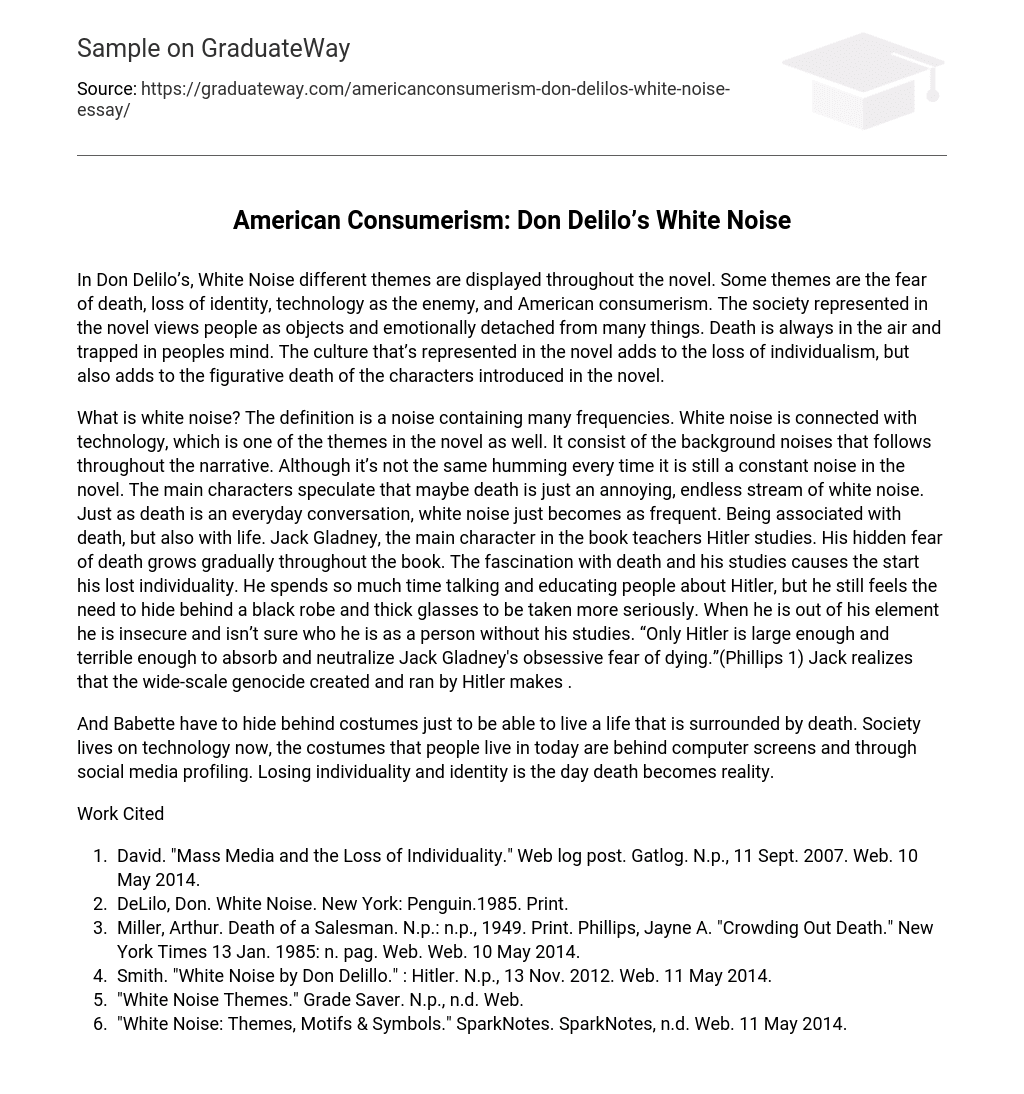In Don Delilo’s White Noise, various themes are depicted including the fear of death, loss of identity, technology seen as the enemy, and American consumerism. The novel’s society views individuals as objects and emotionally disconnected. Death looms in the air and haunts people’s thoughts. The culture depicted in the book contributes to the decline of individualism and symbolizes the demise of the introduced characters.
White noise, defined as a noise containing multiple frequencies, is closely tied to technology, a recurring theme in the novel being discussed. It serves as the background noise that persists throughout the narrative, albeit with varied hums. This constant noise is likened by the main characters to death, with speculation that perhaps death itself is an annoying and ceaseless stream of white noise. White noise becomes as commonplace as death in everyday conversations, inherently associated with both life and death.
Leading character Jack Gladney, who teaches Hitler studies in the book, gradually develops a hidden fear of death. His fascination with death and his career in studying Hitler contribute to his loss of individuality. Despite spending significant time educating others about Hitler, Jack still feels compelled to hide behind a black robe and thick glasses in order to be taken more seriously. Outside his area of expertise, he becomes insecure and struggles to define his own identity. Jack ultimately realizes that only Hitler’s grand scale genocide can sufficiently absorb and neutralize his obsessive fear of dying. (Phillips 1)
And Babette must conceal herself with disguises in order to navigate a life encompassed by death. In today’s society, technology reigns supreme and people hide behind computer screens and social media profiles as their modern-day masks. The moment death becomes real is when one loses their individuality and identity.
Work Cited
- David. “Mass Media and the Loss of Individuality.” Web log post. Gatlog. N.p., 11 Sept. 2007. Web. 10 May 2014.
- DeLilo, Don. White Noise. New York: Penguin.1985. Print.
- Miller, Arthur. Death of a Salesman. N.p.: n.p., 1949. Print. Phillips, Jayne A. “Crowding Out Death.” New York Times 13 Jan. 1985: n. pag. Web. Web. 10 May 2014.
- Smith. “White Noise by Don Delillo.” : Hitler. N.p., 13 Nov. 2012. Web. 11 May 2014.
- “White Noise Themes.” Grade Saver. N.p., n.d. Web.
- “White Noise: Themes, Motifs & Symbols.” SparkNotes. SparkNotes, n.d. Web. 11 May 2014.





